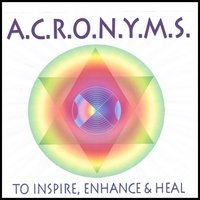 The Jedi Master Yoda said “Do, or do not; there is no Try.” Today, on our Friday “Word Fast”, we examine the fact that the word TRY is often used as a scapegoat, to avoid commitment. Jack gives us an acronym to reframe our thinking and urges us to make a clear choice for moving forward in any intention…
The Jedi Master Yoda said “Do, or do not; there is no Try.” Today, on our Friday “Word Fast”, we examine the fact that the word TRY is often used as a scapegoat, to avoid commitment. Jack gives us an acronym to reframe our thinking and urges us to make a clear choice for moving forward in any intention…
My acronym today is: T.R.Y. (To Restrict Yourself)
This acronym (To Restrict Yourself) revealed to me the awareness that whenever I use TRY in my vocabulary to describe my intentions about some person, place or thing, those actions are restricted.
I can look back in my life and remember saying “I am trying to get a better job; I am trying to improve my relationship; I am trying to save money”. In a deeper part of my being I knew these were not statements about my actions. Rather, they were vague expressions of a desire. In most cases I used the word TRY when explaining the lack of fulfillment in my life. I utilized TRY as my scapegoat deflecting from any accountability for my thoughts, words and actions.
TRY, when spoken in the first person, creates a restrictive holding pattern, much like a plane waiting to land at the airport. The plane continues to circle around and around awaiting for the commitment to action by the ground crew.
There were experiences in my life I didn’t know what choice to make on a particular situation. I would use the word TRY to state a false belief to others that I had committed to some action although I had not seen any results from my actions.
To resolve the restriction in the statement “I am trying to get a better job,” you have two choices. First is the non-action statement: ” I would like a better job, but I have not made the commitment to pursue anything yet because I am unsure on what steps to take.” The second is the commitment to action: “I would like a better job and have been posting my resume discretely on websites, I will give it another week and then I will email my resume to colleagues in Boston”.
In the statement: “I am trying to improve my relationship,” again I have two choices. First the non-action statement: “Over the months I have been unfulfilled with Pat, we are like roommates rather than life partners. I’m stuck I don’t know what to do.” The second is a commitment to action: “I sat down with Pat last night and expressed my feelings, we both agreed to counseling and made an appointment for next Thursday.”
In some cases the word TRY is useful to express action experienced in the moment, “I am trying to move this large stone.” But in my experience, when the word TRY is utilized to describe our desires to change “what is”, the choice and use of the word only keeps “what is” staying the same.
The energetic influence of try is stagnant and unresolved with no beginning or completion. Similar to spinning your wheels, it gives you something to do, but doesn’t get you anywhere.
You are not trying to breathe, you ARE breathing. You are not trying to read this you ARE reading this.
Using try to describe your intentions is simply To Restrict Yourself. Take the Jedi Master’s advice: “Try not! Do, or do not.”
Next week’s acronym is L.I.E.
Listen to Jack’s soothing voice as he describes more powerful acronyms on his website www.sciencesofspirituality.org.

John Nickolas Barakitis is the founder of Sciences of Spirituality a project of the Congressional District Programs a 501(c)(3) non-profit company. As educators and practitioners in holistic massage therapy and Reiki, John and his wife Sona offer products and services to Inspire, Enhance and Heal through music and the spoken word. For more information visit www.sciencesofspirituality.org
Purchase the full 3-hour CD of 65 A.C.R.O.N.Y.M.S. To Inspire, Enhance and Heal at Amazon.com



















